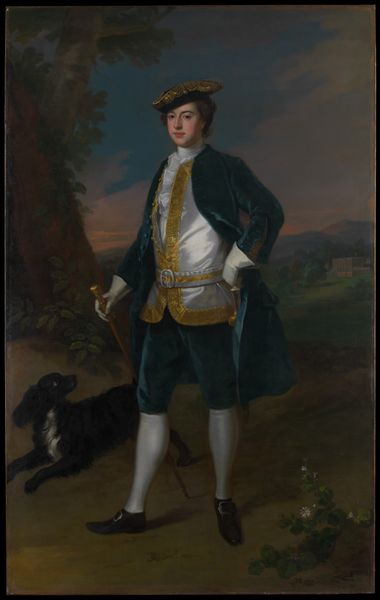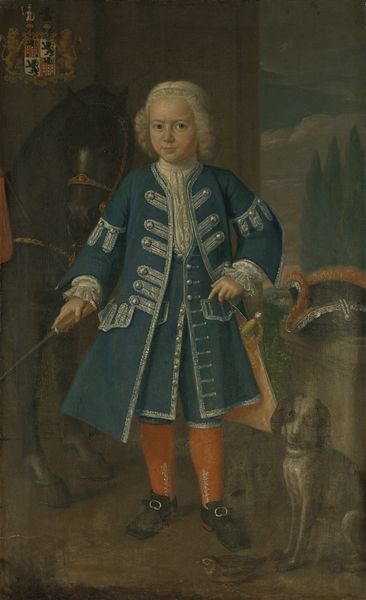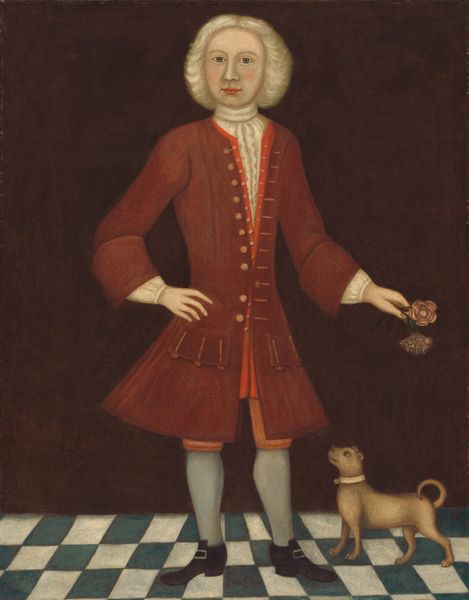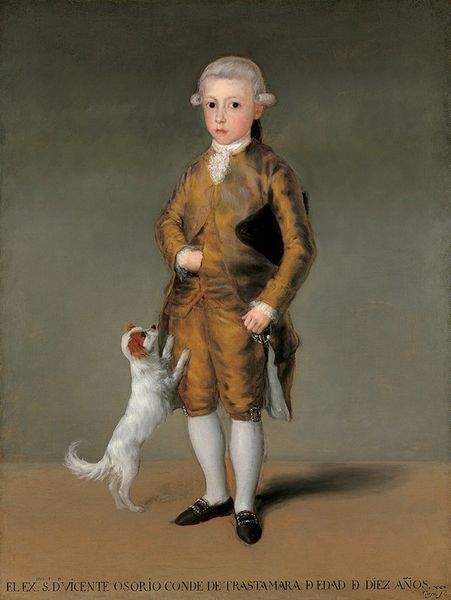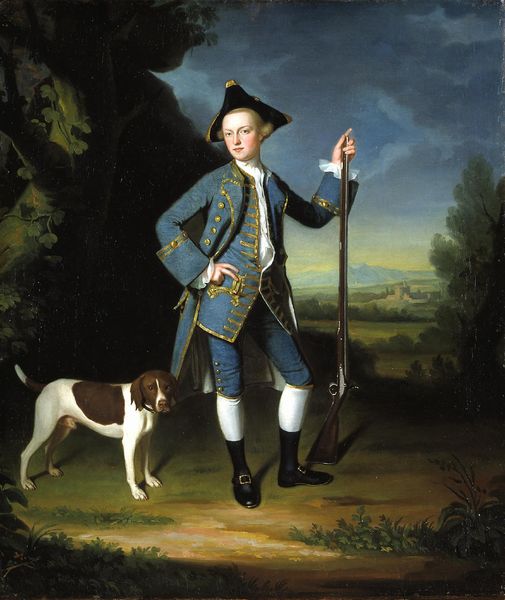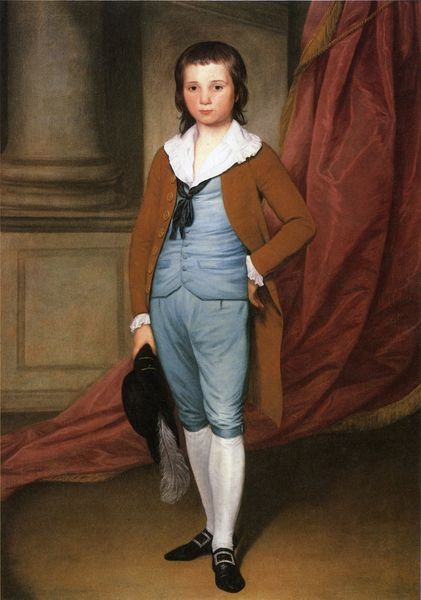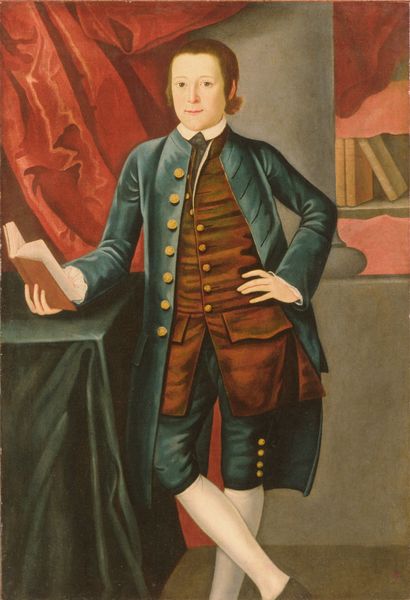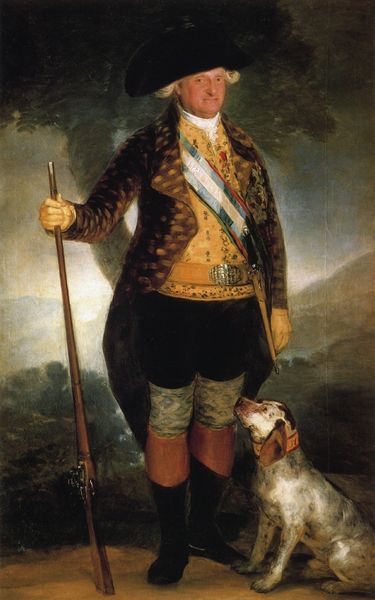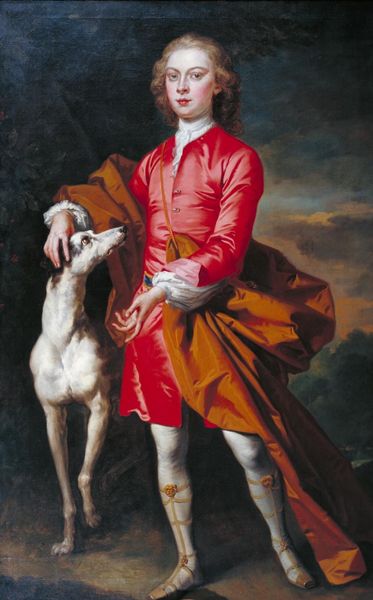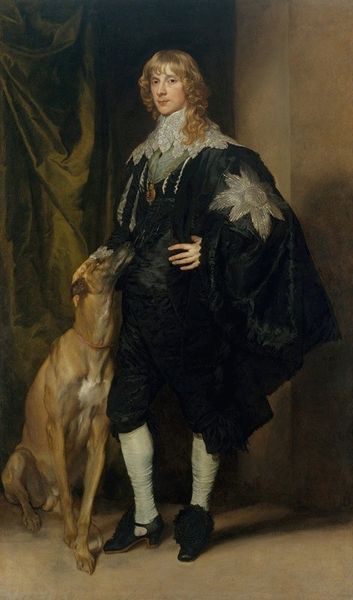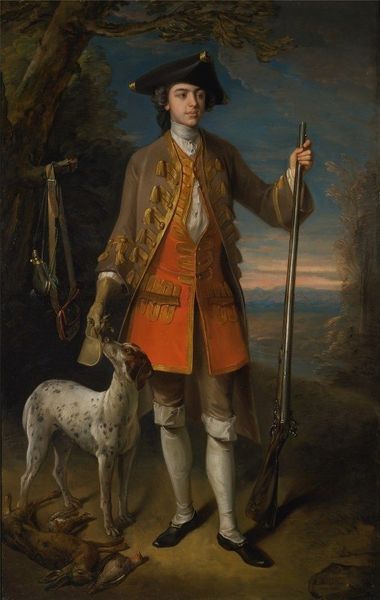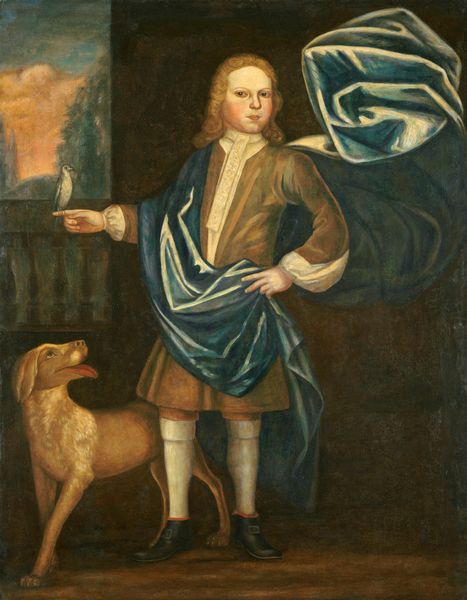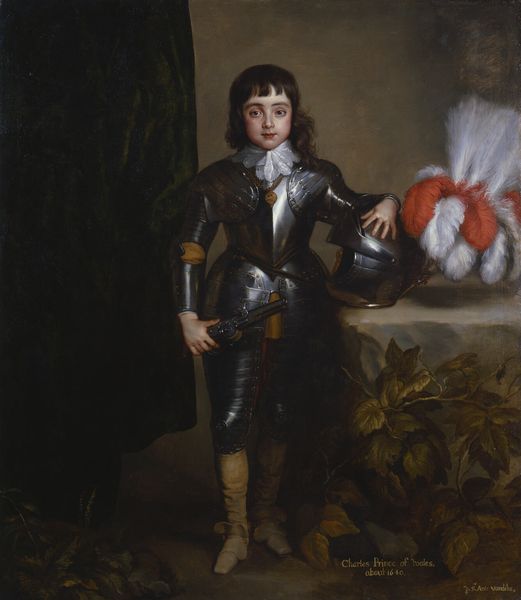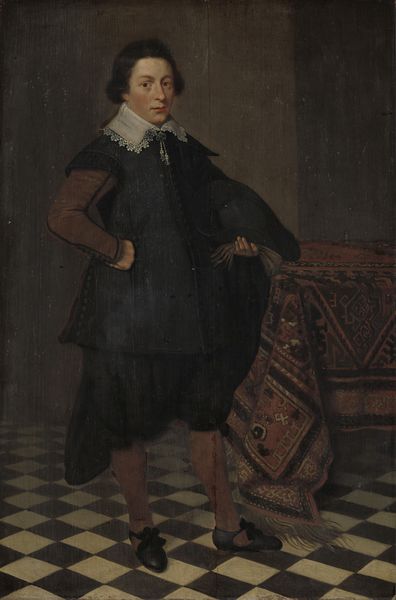
oil-paint
#
portrait
#
baroque
#
oil-paint
#
landscape
#
figuration
#
oil painting
#
animal portrait
#
portrait drawing
#
genre-painting
Dimensions: overall: 121.5 x 83.5 cm (47 13/16 x 32 7/8 in.) framed: 135.6 x 98.1 x 3.4 cm (53 3/8 x 38 5/8 x 1 5/16 in.)
Copyright: National Gallery of Art: CC0 1.0
Editor: Here we have an oil painting titled "Boy in Blue Coat," made around 1730 by an unknown artist. It feels like a glimpse into a different world, the boy's gaze and elaborate clothing creating such a sense of formality. What catches your eye about this piece? Curator: Immediately, I'm drawn to the labor involved in creating such a portrait. Consider the pigments used to achieve that specific blue, likely sourced from lapis lazuli and painstakingly ground. How does the value placed on these materials speak to the sitter's family's wealth and status? Editor: So, it’s about more than just aesthetics; it reflects the economic realities of the time? Curator: Precisely! And look closer at the fabric. The cut of the coat, the tailoring, each detail reflects a highly skilled artisan. The production of luxury goods was deeply interwoven with the lives of those who could afford them, but what about those who labored to produce them? What were their names and conditions of labour? The drape itself mimics grand curtains indicating how staging and mise-en-scène have social weight, far beyond visual flourish. Editor: I never considered the role of the people who made the clothes and prepared the materials. Does the way the artist chose to depict the background landscape factor into this too? Curator: Absolutely! The background landscape, probably representing the family’s estate, serves to further contextualize their socio-economic power. It reinforces this image as a manufactured commodity, reflecting not just the individual, but the system of labor and consumption that supports them. What are your thoughts now on its impact? Editor: It's a powerful statement on wealth and social standing, disguised as a simple portrait. Looking at the portrait through a material lens makes it more complex and reveals more about this society and era than initially apparent. Curator: Indeed. Analyzing art through its materials and the process of production unearths fascinating stories about value, labor, and social structures, doesn't it?
Comments
No comments
Be the first to comment and join the conversation on the ultimate creative platform.
